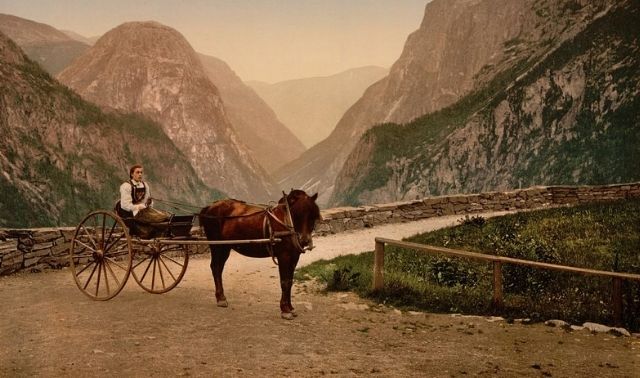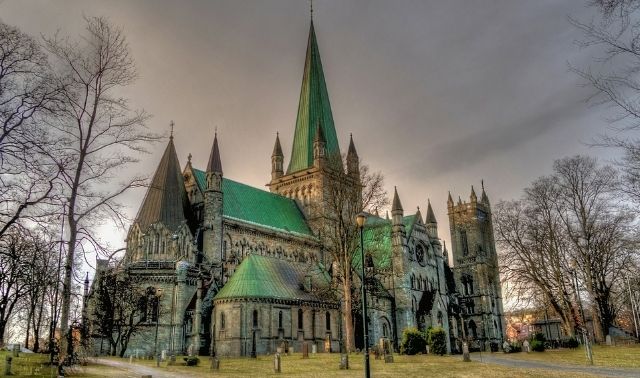Sign up for the Family Tree Newsletter Plus, you’ll receive our 10 Essential Genealogy Research Forms PDF as a special thank you!
If you’ve got Norwegian ancestry, you’ve probably researched bygdebøker—or wished you could. These community histories include millions of genealogical records, but unfortunately, they’re not easy to search: They’re handwritten in Norwegian and their contents aren’t indexed.
Bygdebøker data are coming online. But they won’t be like the genealogical databases you know today. The data will be organized in family group format, so finding one ancestor may mean finding an entire lineage. And other genealogical datasets will be merged in—automatically linking census, parish and other records to individuals in bygdebøker family trees.
Jealous of your neighbors who have Norwegian roots? This is just the beginning, if
FamilySearch (the Church of Jesus Christ of Latter-day Saints’ genealogical arm) has its way. Eventually, many nations’ family trees would be similarly mapped out. What’s happening behind the scenes of this monumental project could mean easier genealogical findings for everyone.
Bygdebøker and beyond
The term bygdebøker (pronounced “beeg-duh-booh-ker”) translates as “community books.” These local histories document Norwegian farms back to the 1600s or before. Entire households may be listed, with dates for births, marriages and deaths.
Right now, you must painstakingly search microfilmed entries for your ancestor’s community until you find him, then follow notes to determine what farm his parents came from. By repeating these steps over and over, you could construct a lineage dating back 200 to 400 years.
A unit of FamilySearch called Family Reconstitution has partnered with
DIS-Norge, a leading Norwegian genealogy organization, to extract data from the
bygdebøker and reconstruct family units. The groupings will be accessible online through a free database (the URL wasn’t available at press time; watch our
blog).
Grouped families aren’t the only exciting aspect of this effort known as the “Norway Project,” according to Roger Magneson, a Family Reconstitution project manager.
“After we extract the genealogical information from the
bygdebøker, we’ll merge into it data from the 1865 census, 1900 census and parish registers,” he explains. “This will provide a rich database.” FamilySearch, DIS-Norge, and the University of Tromsø have been indexing Norway’s 1875 census (the current
version is incomplete); these data may be merged, too.
In a technological breakthrough, merged data will automatically link to individuals in the bygdebøker database. “Back in the 1980s, the intent was to use computers to merge single-event records into records describing an individual with multiple life events,” Magneson explains. “But it required a genealogist to confirm that records matched.”
FamilySearch contracted with
Pleiades Software (whose GenMerge software finds and merges duplicates in GEDCOM files) to develop a new merging tool that addresses this problem. The tool’s tests with the Norway data show a 95 percent accuracy rate. When asked how that last 5 percent will be compensated for, Magneson says, “We think 95 percent accuracy is pretty good. But this is a compiled source”—meaning that it’s up to the user to verify information.
When can you start searching Norway’s data? “We believe we’ll post the first searchable
bygdebøker data by the end of June 2009, maybe sooner,” Magneson says. Because of the size and unique nature of the database, FamilySearch is still working out details on Web hosting. “Check Web sites for FamilySearch, DIS-Norge and the
National Archives of Norway for updates,” he adds. “And keep watching your genealogy news sources. More is coming.”
Family forest
Preliminary data from the Norway Project show another interesting result. “In one clerical district, there were 957 family trees, but one tree accounted for 80 percent of the population. That means there was essentially one family in that district,” Magneson says. If these data remain consistent across the country, “Norway is probably less than 400 unique families.”
The Norway Project will line up those trees like a national genealogical forest, with overlapping branches but distinct trunks. But Magneson says this is just the start. Family Reconstitution already has data sets lined up from Scotland, Iceland, Britain, Mexico, the Polynesian islands, and Aztec and Eskimo sources. “The Norway Project is the pilot to do this for every country in the world.”



